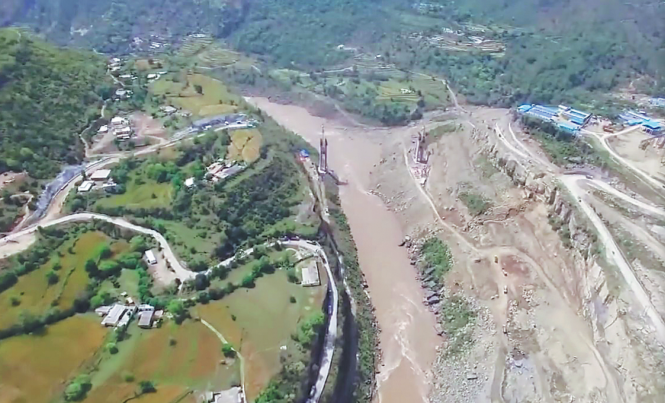Pakistan gets China's help in building dam
By Kaswar Klasra in Islamabad | China Daily Global | Updated: 2020-07-20 09:24

Project, to be ready in 2028, expected to meet water, energy needs in Gilgit-Baltistan region
A new mega project in northern Pakistan is expected to meet both water and energy needs of the region, according to officials and experts.
Work on the construction of Diamer Bhasha Dam near Chilas, a city in the Diamer district in the Gilgit-Baltistan region, has started.
"Diamer Bhasha Dam is set to change the destiny of Pakistan by addressing its energy and irrigation problems," Faisal Vawda, Pakistan's federal minister for water resources, said. "It's Pakistan's lifeline."
The dam's reservoir will be 272 meters in height, and it is said to be the tallest roller compact concrete dam in the world.
Roller compacted concrete is a special blend of concrete that has the same ingredients as conventional concrete but in different ratios, and with a partial substitution of fly ash for Portland cement. This reduces thermal loads on the dam and reduces chances of thermal cracking.
The dam has a proposed spillway with 14 gates and five outlets for flushing out silt. The diversion system comprises two tunnels and a diversion canal. It will also include the construction of powerhouses.
Asim Saleem Bajwa, chairman of China-Pakistan Economic Corridor Authority, said the dam will generate 4,500 megawatt of hydroelectric power.
It was a historic moment as Prime Minister Imran Khan kicked off the construction work on Diamer Bhasha Dam, he said. "Around 16,000 jobs will be created during the construction of the dam."
Imran Khan officially launched the construction work on Wednesday, with Pakistan's Chief of Army Staff Qamar Bajwa by his side.
The biggest
"Diamer Bhasha Dam will be the biggest dam in Pakistan's history," the prime minister said while addressing the public during the launch. "The dam will benefit the country both economically and environmentally, especially the people of Gilgit-Baltistan," he said.
The multibillion-dollar project is estimated to be completed in 2028. It is a multipurpose project that will be used for water storage, flood mitigation, irrigation and power generation.
"This is no ordinary project. There is a reason why both Pakistan's prime minister and the army chief were present at the site for the project launch. It will have an impact on Pakistan's economy, security and politics," said Ahmed Quraishi, a senior fellow at Project Pakistan 21, an independent research organization based in national capital Islamabad.
Feather in the cap
It is another feather in the cap for the Chinese engineers who are known for undertaking challenging international projects, he said.
The project is being jointly constructed by Power China and Pakistan's Frontier Works Organization.
The Water and Power Development Authority of Pakistan approved the award of civil works for construction of the dam and the 21-MW Tangir Hydropower Project to the joint venture partners.
The two companies signed a contract in June with a local company for the construction of the diversion system, main dam and access bridge as well as the hydropower project.
"We are grateful to our all-weather friend China for its support in the construction of the mega project," said Faisal Vawda, the water resources minister.
Quraishi said the technical specifications of the project suggest it will be something that engineers worldwide will be studying due to the region's terrain. "China's experience in the dam construction is unparalleled," he said.
Shaukat Basra, a spokesperson for Pakistani's Punjab province, said the dam will prove to be a backbone of Pakistan's power generation.
"Power China is a part of the dam construction. It will be built keeping in view the international standards. They have already constructed Port Qasim Power Plant in Karachi, which has turned the port city of Karachi into a 'city of lights'," he said.
"I am glad to know Chinese companies have started construction of the dam. Kudos to China-Pakistan friendship," he added.
The author is a freelance journalist for China Daily.
























